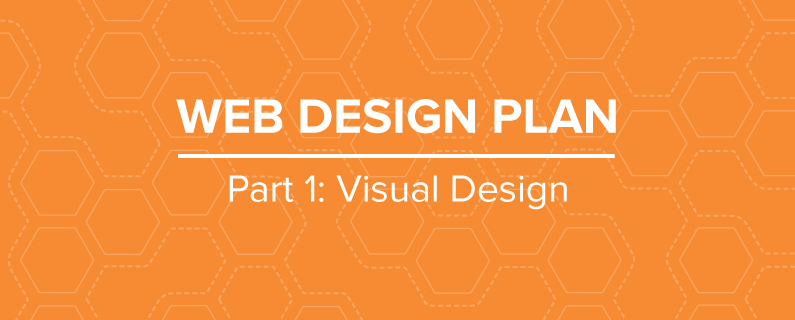
Your web design plan needs to be more than just a pretty user interface. Sure the visual appeal is important, but so is the content (written and visual), the conversion plan and the search strategy. Over the next few weeks, I will take a take a closer look at each of these elements. Whether you are kicking off your first website or getting ready for an update, follow along to develop your web design plan.
Web Design Plan Part One: The Visual Design
The rise of mobile responsive design has dramatically changed what we consider “good web design.”
Vertical hierarchy
Vertical hierarchy rules the small screen as we are forced to make choices about what is most important because only one thing can be on the top of the page. This shift has moved us away from rotating images. This was a trend we first identified in this blog post as we said goodbye to rotating images.
Continuing to use the rotating image is lazy. It means you didn’t take the time during the development of your web design plan to really decide on your web site priorities. If you don’t make the choice, your visitors will make it for you by clicking away after the first one loads. If two images are important, move one further down the page or to the top of another page.
Simple Navigation
When we first started designing websites most developers took the file cabinet approach. Everything needed to be shoved somewhere. Just like your file cabinet, things were placed in drawers that were never seen again. Do you really need all that information on your website? Yes you do because the deep content helps improve your authority for search engines but that doesn’t mean it needs to be in your navigation. The multi-tier confusing navigation actually makes it harder for people to find the most relevant information.
That was definitely our point when we first wrote this post about dropping the drop downs.
To tackle the navigation portion of your web design plan, look at the data. Review your web statistics to determine which pages people are visiting regularly, which are distractions and which really move people along the sales path. Use internal links, sub menus and sidebar calls to action (CTAs) to direct people where you want them to go. And make sure your search tool serves up the most important information first.
Relevant Sidebars
This is another hold over from an early time. While sidebars can add value on specific pages, they are often irrelevant, simply taking up space because we don’t know what else to put there. On mobile devices these sidebars shift to the bottom of the page and probably aren’t even seen anyway.
If pages seem light on content, ask yourself if the page can be combined with another page, expanded with more content or if it really needs a unique sidebar.
Messages at a Glance
The attention span of your average viewer is fairly short. As you work on your web design plan, you need to think about how you will grab someone’s attention quickly and direct them where you want them to go; that is one of the reasons we are seeing a rise of icons replacing long blocks of instruction text.
So now you have your list of design elements to start working on. When you have finished this section, come back next week to read about the next element of your web design plan: Content.
Roundpeg is an Indianapolis web design firm.

